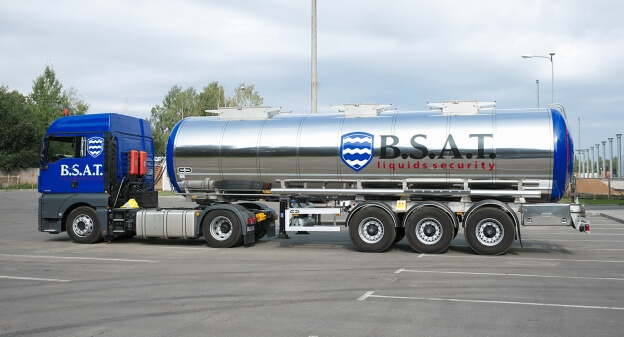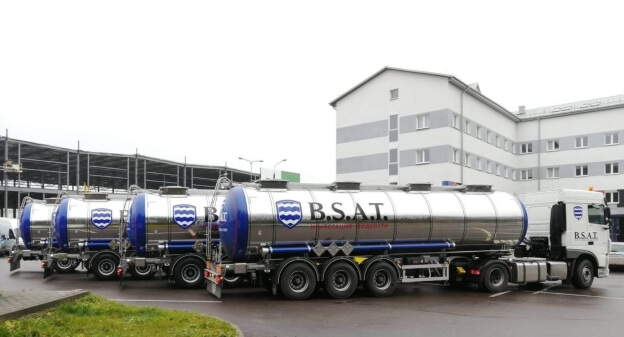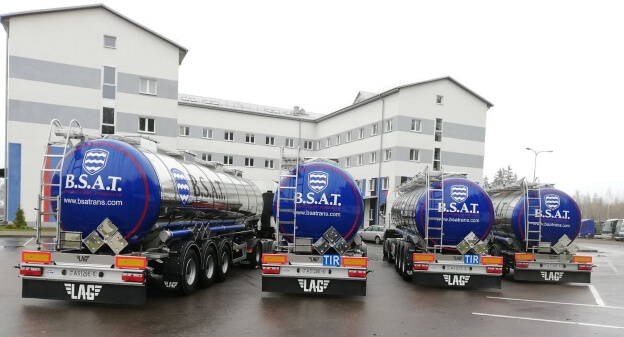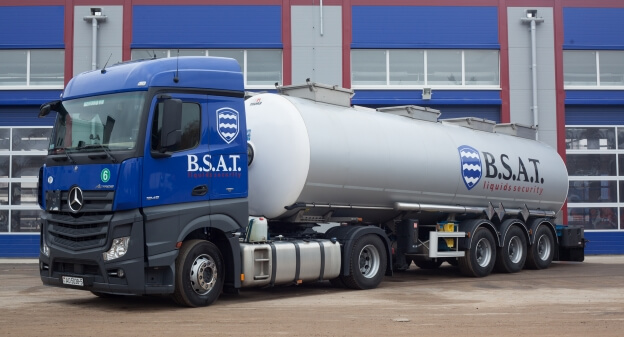Transportation of
chemical liquid goods
Transportation of dangerous chemical goods requires the contractor to have certain skills, as well as an integrated approach to solving problems. Transportation of dangerous substances is associated with the special conditions, because most chemicals (acids, alkalis, ammonia water, soda ash, potassium chloride, phenol and others) are potentially dangerous to human health, the environment, property. Such substances are classified as highly dangerous goods, so their transportation is better to trust to a specialized company. Only specialists will be able to correctly design a safe transportation scheme and take into account all the possible risks.
General rules for the transportation of the chemical goods
Transportation of dangerous substances requires the use of a special labeling system and additional documentation. Chemical goods can only be transported using equipped vehicles.
Each trip is accompanied by the cards to decipher the emergency code. They indicate in advance the procedure for carrying out activities to eliminate emergencies on the way and their consequences.
Transportation of chemical goods by road must take into account the characteristics and properties of the transported substances. They can be dangerous or conditionally dangerous, flammable and explosive, poisonous and radioactive, caustic, corrosive or infectious. Depending on the category chosen, the carrier must comply with a number of established requirements:
- Involve only those professionals who have been trained and have experience working with the chemical goods;
- Have permits transport documents available;
- Use only the equipment that is equipped for transporting chemicals;
- Choose the best route;
- Follow the mandatory tank cleaning procedure after completing the trip.
Requirements for drivers
Only drivers with at least three years of experience in a vehicle in this category can transport dangerous chemicals. Before each trip, a mandatory safety briefing, related to the transportation of this particular type of goods, is carried out. This specifies the driver’s behavior in the event of an accident, detection of a vehicle malfunction, leakage, damage of the tank, fire and other unforeseen situations.
In the presence of support, the freight forwarder must have documentary evidence of authorization. Loading and unloading of dangerous chemical goods is allowed only with the involvement of a specialist with at least 3 full calendar years of experience. In direct contact with containers or dangerous substances, chemical protective measures are required.
List of required documents
When transporting dangerous goods, it is necessary to prepare in advance, properly arrange and transfer the list of documents to the driver. The interstate transportation requires an ADR — European Agreement concerning the International Carriage of Dangerous Goods by Road, certificates, passport of the transported substance marked “Dangerous cargo”, certificate of driver’s admission to transportation, permission of the Ministry of Internal Affairs to transport such goods, special route sheets. Official registration of papers is included as a separate item in the rules for the transportation of dangerous goods.
Transport requirements
Transportation of liquid chemical goods is carried out only in especially durable chemical tanks. The material from which the tank is made, is covered with a special anti-corrosion composition and is able to withstand the long-term effects of oxidizing and corrosive chemicals. When transporting flammable reagents, containers with heat insulating properties are used. It is important to remember that some goods are very susceptible to the temperature mode of transportation, therefore it is important to observe consistency of conditions, and also not to forget about testing the performance of safety valves to avoid leakage.
The fuel tank, at the specialized motor transport, is removed from an electrical wiring, car battery and the engine as much as possible The bottom and the sides, ancillary equipment and piping necessarily have an additional protection. Cars are necessarily equipped with a grounding device for protection against lightning discharges, and the fuel tank is armored and moved to a closed container. A vehicle can have only one trailer or semi-trailer.
Choose the best route
At the stage of the development and coordination of the route, the specialists of the transport logistics department will necessarily make up several equivalent traffic routes, from which the optimal one is then selected. The length, the presence of restrictions on the use of transport capacity of the load, the probability of traffic jams, traffic on the route and other important nuances belong to the selection criteria.
Particular attention is paid to a measures for cleaning tanks from the chemical residues. This is necessary so that potentially dangerous reagents do not accumulate and come into contact with the substances transported next time.
If you want to fully protect yourself from the unforeseen situations and entrust the safety of goods to the experienced professionals, pay attention to the proposals of our company. We have been successfully operating in the market for over than 20 years, which has allowed us to accumulate certain experience and explore the infrastructure of the road freight market. Our specialists are constantly being trained and improve their professional level, which allows us to stay afloat, successfully withstand the competition and solve the most complex complex tasks!
Used machinery
Last projects























